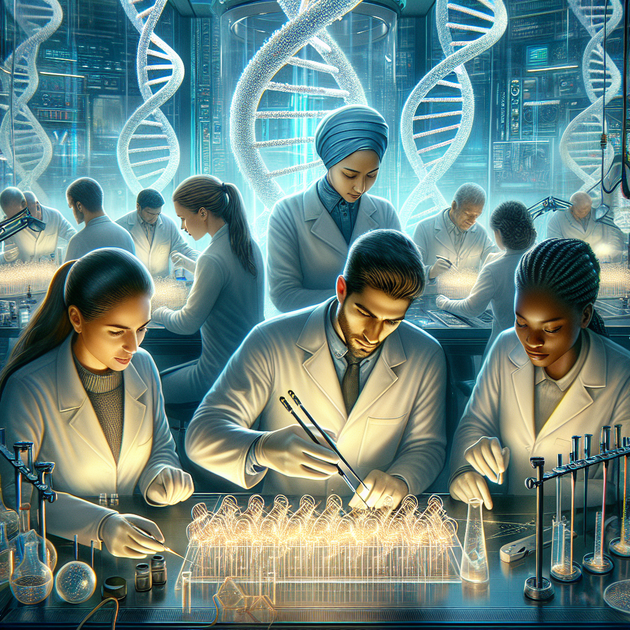Have you ever wondered if humans could build life itself from scratch? Well, that’s no longer just the plot of a sci-fi movie. Scientists have officially begun work on creating artificial human DNA—literally writing the code of life by hand (or computer).
## What Is Artificial Human DNA?
So let’s break this down. Artificial human DNA means scientists are trying to synthesize the entire blueprint that makes a person—our genetic code—from nothing but basic chemical ingredients. Instead of copying or tweaking existing genes through gene editing methods like CRISPR, researchers want to assemble full strands of human DNA in the lab.
It sounds wild—and it is! But it’s also a logical next step after projects like mapping the whole human genome. Rather than reading nature’s recipe book, we’re seeing if we can write our own.
## Why Would We Want to Build Human DNA From Scratch?
You might be asking yourself: “What’s the point? Don’t we already have plenty of natural DNA?” Great question! There are actually some compelling reasons:
– **Understanding Life**: Synthesizing artificial human DNA lets us learn how life assembles itself—piece by piece.
– **Medical Breakthroughs**: Building custom genes or even whole chromosomes could help cure genetic diseases or create organs for transplant.
– **Safer Research**: Laboratory-made genomes can be engineered without dangerous viruses or mutations.
– **Biotech Innovation**: This opens doors to new materials and medicines designed at the molecular level.
– **Controlling Evolution**: It lets us direct genetic changes more precisely than ever before.
But of course, with great power comes great responsibility…
## The Big Challenges and Ethical Questions
Creating artificial human DNA isn’t just a technical challenge—it raises some serious ethical questions too. Here’s a quick look at what keeps scientists (and ethicists) up at night:
– **Playing God?** Some worry about humans taking too much control over life itself.
– **Designer Babies:** Could this lead to people choosing their kids’ traits?
– **Accidents:** What if an artificially created organism causes harm?
– **Access:** Who gets to decide how this technology is used—or who benefits?
There’s also a big technical hurdle: building something as complex as human DNA isn’t easy. Even though we’ve made synthetic bacterial genomes before (like Craig Venter’s famous 2010 experiment), scaling that up to humans is a whole different ballgame.
### Quick Pros & Cons List
Here’s how things stack up:
**Pros**
– Better disease models
– New treatments and cures
– Advances in biotech and materials science
**Cons**
– Risk of misuse
– Unintended consequences
– Big ethical debates
## A Real-Life Anecdote: When Science Gets Personal
Let me share a quick story I read about Dr. Jef Boeke—a leading scientist in synthetic biology who helped kick off this latest project on artificial human DNA. When he started out studying yeast genetics decades ago, he never imagined he’d one day try rewriting the code for all of humanity! Boeke once joked with his students that maybe one day they’d be able to “build a better yeast.” Now he’s leading teams trying to build better chromosomes—and facing questions he never dreamed of about ethics and responsibility.
## What Happens Next?
The truth is nobody knows exactly where this will lead—but it’s sure to spark plenty of discussion both inside and outside science labs. Creating artificial human DNA has massive potential for good but needs careful oversight and lots more conversation as things progress.
So here’s my question for you—if you had the power to redesign our own genetic code from scratch…what would you change?

Leave a Reply